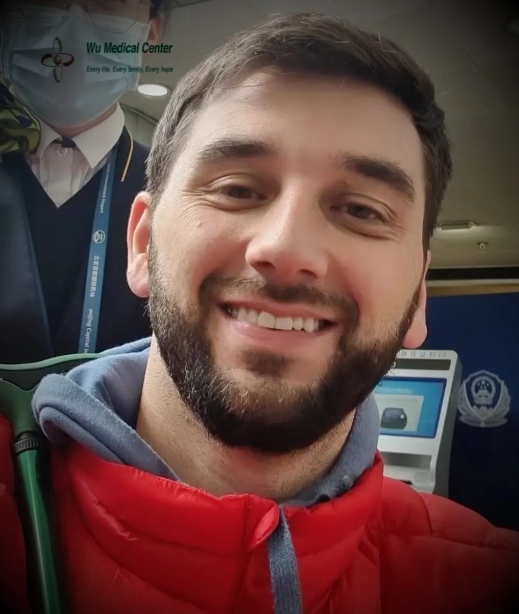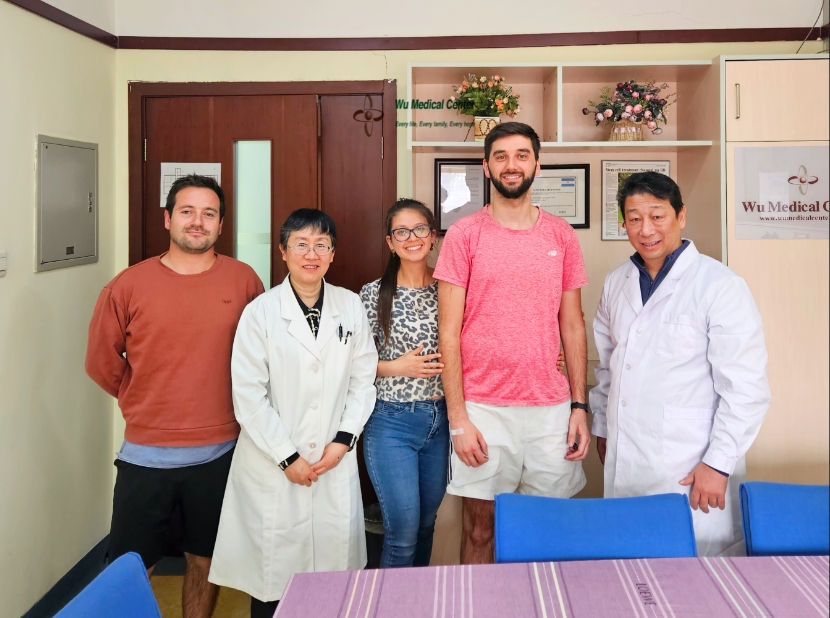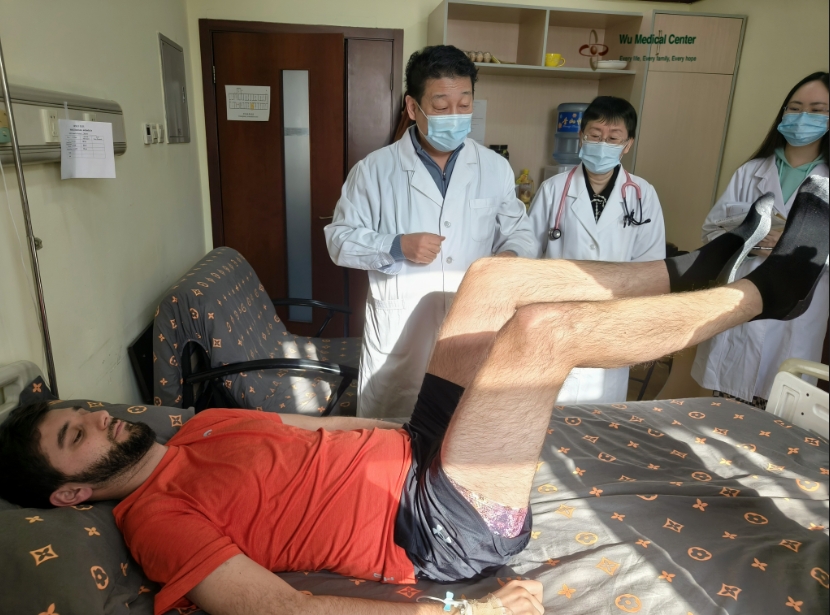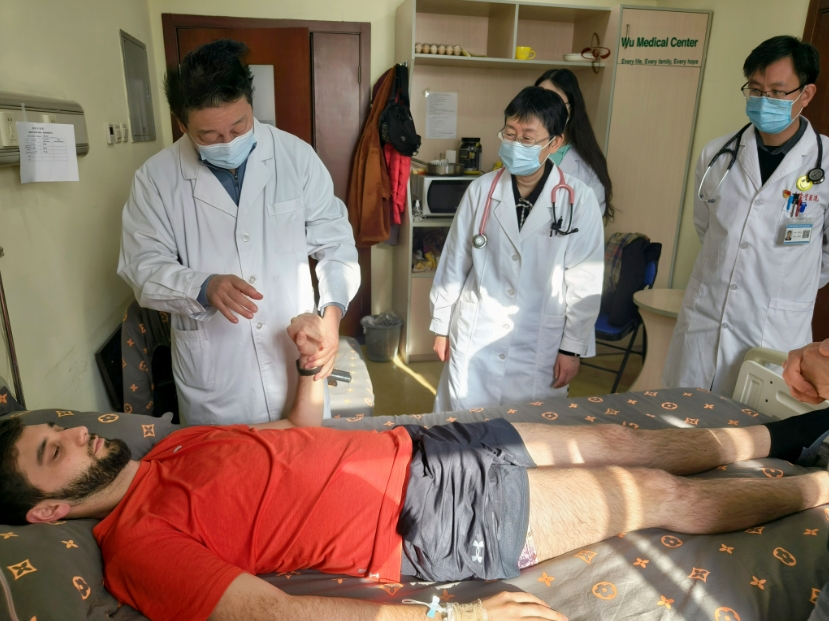Javier Alejandro-Amyotrophic lateral sclerosis (ALS)-(Chilean)
 Patient Name: Javier Alejandro
Patient Name: Javier Alejandro
Gender: Male
Age: 31 years old
Nationality: Chilean
Diagnosis: Amyotrophic lateral sclerosis (ALS)
Admission Condition:
The patient was admitted with the main complaint of "progressive weakness in both lower limbs with difficulty walking for over a year" diagnosed as ALS. The patient experienced gradual weakness in the lower limbs without any apparent cause one year ago, followed by difficulty walking and decreased strength in both upper limbs. Occasional choking while drinking water was observed, but no dizziness, headache, or vomiting.
Physical Examination:
Pulse: 66 beats per minute, Respiration: 20 times per minute, Blood Pressure: 116/73mmHg. He has normal growth, moderate nutrition. No cyanosis of his lips, no redness or swelling in his throat. He has symmetrical chest, normal respiratory movement of his chest. Clear breath sounds in his both lower lungs, no obvious dry or wet rales heard. He has strong heart sounds, regular rhythm, no murmurs in his heart valves. He has soft abdomen, his liver and spleen are not palpable below the ribs. No edema in his lower limbs.
Neurological Examination:
He has clear consciousness, normal mental state. His articulation is clear. He has normal calculation, memory, and orientation. His pupil diameter 3mm, are sensitive to light response. He has flexible eye movements, no nystagmus. He has symmetrical nasolabial folds and forehead lines, his tongue is in the midline, no tongue atrophy, normal tongue movement, strong cheek bulging, normal chewing strength. He has occasional choking while drinking water. Strong elevation of the soft palate on his both sides, his uvula is in the midline. He has strong neck flexion and shoulder shrug. Proximal muscle strength in his both upper limbs was grade 3+. His left wrist extension and flexion strength were grade 3+, his left grip strength was grade 3, his left interosseous muscle strength was grade 3+. His right wrist extension and flexion strength were grade 4, his right grip strength was grade 3+, his right interosseous muscle strength was grade 3+. Muscle strength in his both lower limbs was grade 3, dorsiflexion and plantar flexion strength in his left foot were grade 4, dorsiflexion and plantar flexion strength in his right foot were grade 4. Obvious weakness was in his lumbar back and abdominal muscles, he was unable to turn over independently or get out of bed by themselves. He was unable to walk independently. Mildly increased muscle tone in his lower limbs. No obvious muscle atrophy, basic normal sensation in his all limbs. He had hyperactive tendon reflexes in his all limbs, weak positive Hoffmann's sign bilaterally, positive Babinski's sign bilaterally. Finger-to-nose and finger-to-finger tests are basically normal. He had slow and clumsy alternating hand movement. He was unstable and inaccurate heel-knee-shin tests due to muscle weakness. He had negative meningeal irritation signs.
Treatment Process:
The patient’s diagnosis of "Amyotrophic lateral sclerosis" was confirmed upon admission. During the hospitalization, the patient received treatment with neural stem cells for repairing motor nerve damage, supporting with mesenchymal stem cells for nutrition, endocrine and immune function, and adjuvant therapy with medications such as edaravone, riluzole, and neurotrophic factors (CAST treatment), along with comprehensive rehabilitation therapy.
Post-Treatment:
The patient's motor function has significantly improved. The strength in his both upper limbs has increased, with proximal muscle strength graded as grade 4+. His left wrist extension and flexion strength are grade 4+, his left grip strength is grade 4, his left interosseous muscle strength is grade 4. His right wrist extension and flexion strength are grade 4+, his right grip strength is grade 4, his right interosseous muscle strength is grade 4. Muscle strength in his both lower limbs is grade 4, and the patient can maintain a bent position for 15 seconds compared to only 3 seconds upon admission. The strength in his lumbar back and abdominal muscles has increased, enabling the patient to independently turn over from a lying position to standing (which was not possible before), and also stand up from a lower seat. His walking distance independently has gradually increased. His Hoffmann's sign has turned negative. The speed and flexibility of his alternating hand movements have increased, and the completion and stability of the heel-knee-shin tests have improved. Overall, there has been a 30-40% improvement in his motor function. His energy, physical endurance, balance, and flexibility have all significantly improved.




